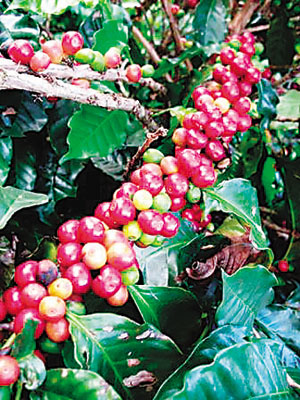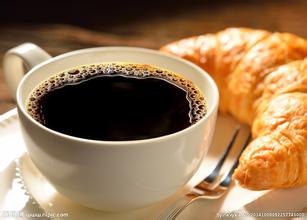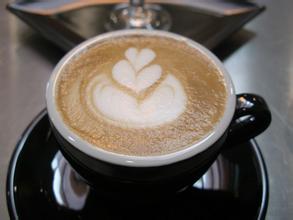The difference of Flavor of Fine Coffee in Coffee Manor of Nicaragua
Boutique coffee (specialty coffee) is also called "specialty coffee" or "select coffee". It refers to coffee made from a small number of raw beans with excellent taste grown in an ideal geographical environment. Depending on the special soil and climatic conditions in which they grow, they have outstanding flavor. After strict selection and classification, this kind of coffee can be regarded as a selection of coffee beans because of its hard texture, rich taste and excellent flavor.

The water tank in front of us is a density classifier (density syphon). No matter which method the coffee fruit will be treated later, all red fruits should be screened here first. And the workers are piercing left and right between us, carrying on their shoulders the coffee fruit they have just picked from the mountain.
Stunted or inferior fruit floats to the end of the tank. The coffee collected from there is directly labeled as commercial grade and sent to the processing plant. As for those who sink underwater, they are eligible to participate in the next round of screening, but they will not be able to tell whether they can become boutique coffee until they are processed.
Density classifier screening good fruit
Some of the fruits that stand out from the classifier are transported to the depulper for peeling and pulp. The so-called "honey-treated" coffee (honeyprocess) describes coffee as sweet as honey, not really processed with honey. The coffee kernel which has been peeled but still adheres to the pulp is directly dried, and some fructose will be absorbed by the core. This method has different names in different countries, such as pulped natural, semi washed and so on. Among them, in Costa Rica, where the government strictly controls the use of water, coffee farmers have created honey treatments named to retain "different thickness of flesh", including yellow honey (yellow honey) and red honey (red honey), which have the thinnest pulp layer, and black honey (black honey), the famous owner of the former Costa Rican COE champion La Brumas de Zurqui. Traditionally, Nicaraguan coffee is mainly washed with water, but because the trend of "honey treatment" has become popular in China and the United States in recent years, some batches are "tailor-made" at the request of buyers.
Most of the kernels after beating will stay in the cement pool for 8 to 12 hours of aerobic fermentation. At this stage, coffee beans are parchment coffee like melon seeds until they are exported. On the outside, there is a layer of pectin (mucilage) that is difficult to scrape off with a knife. The biggest purpose of fermentation is to decompose and wash away pectin before it gets moldy, which is called fully washed processing.
Good bean precipitate trough bottom
The fermented coffee will be washed with clean water in a long sink. The workers stirred the coffee in the sink like a dragon boat with wooden boards in hand.
"Why? The farther away from the sink, isn't it cleaner and of higher quality? "A group member is at the end of the trough waiting for the current to arrive.
The leader of the treatment group said with a laugh, "the heavier the beans are, the better the quality, so they precipitated at the bottom of the sink a long time ago." What floats to your side, we call it butter grade, which is used to make instant coffee! The best, on my side, is for the competition, followed by boutique and commercial drinking with local people. "
Cleaned beans and sun-treated fruits are transported to a treatment facility at the foot of the mountain for a drying process of 1 to 2 weeks. When the water content is reduced to about 12%, it will be packed into the warehouse.
Patrick Tam,Knockbox Coffee Company founder, Hong Kong's first certified boutique baristas and cup testers, SCAA and SCAE approved baristas, American Baking Association member, COE referee.
Important Notice :
前街咖啡 FrontStreet Coffee has moved to new addredd:
FrontStreet Coffee Address: 315,Donghua East Road,GuangZhou
Tel:020 38364473
- Prev

Espresso blending knowledge how to mix espresso with decaf
Espresso with several of my favorite decaf coffees if you need decaf, prepare some water-processed Brazilian decaf beans. Use 50% of this coffee bean, plus some other coffee beans with different flavors. If you want coffee that is almost completely decaffeinated, you can choose one of the following combinations: 50%
- Next

Introduction to the flavor of coffee made by roasting and blending first and then blending by two methods of baking
First bake, then spell vs, then bake, boil, match vs Italian, match the target flavor and its related standards, match proportion and cost control, match coffee, the first order of life, for the flexibility of matching and the control of flavor, of course, and the load limit of my current bean roaster, choose to bake first and then spell; brew, Italian, the same to one.
Related
- Does Rose Summer choose Blue, Green or Red? Detailed explanation of Rose Summer Coffee plots and Classification in Panamanian Jade Manor
- What is the difference between the origin, producing area, processing plant, cooperative and manor of coffee beans?
- How fine does the espresso powder fit? how to grind the espresso?
- Sca coffee roasting degree color card coffee roasting degree 8 roasting color values what do you mean?
- The practice of lattes: how to make lattes at home
- Introduction to Indonesian Fine Coffee beans-- Java Coffee producing area of Indonesian Arabica Coffee
- How much will the flavor of light and medium roasted rose summer be expressed? What baking level is rose summer suitable for?
- Introduction to the characteristics of washing, sun-drying or wet-planing coffee commonly used in Mantenin, Indonesia
- Price characteristics of Arabica Coffee Bean Starbucks introduction to Manning Coffee Bean Taste producing area Variety Manor
- What is the authentic Yega flavor? What are the flavor characteristics of the really excellent Yejasuffi coffee beans?

